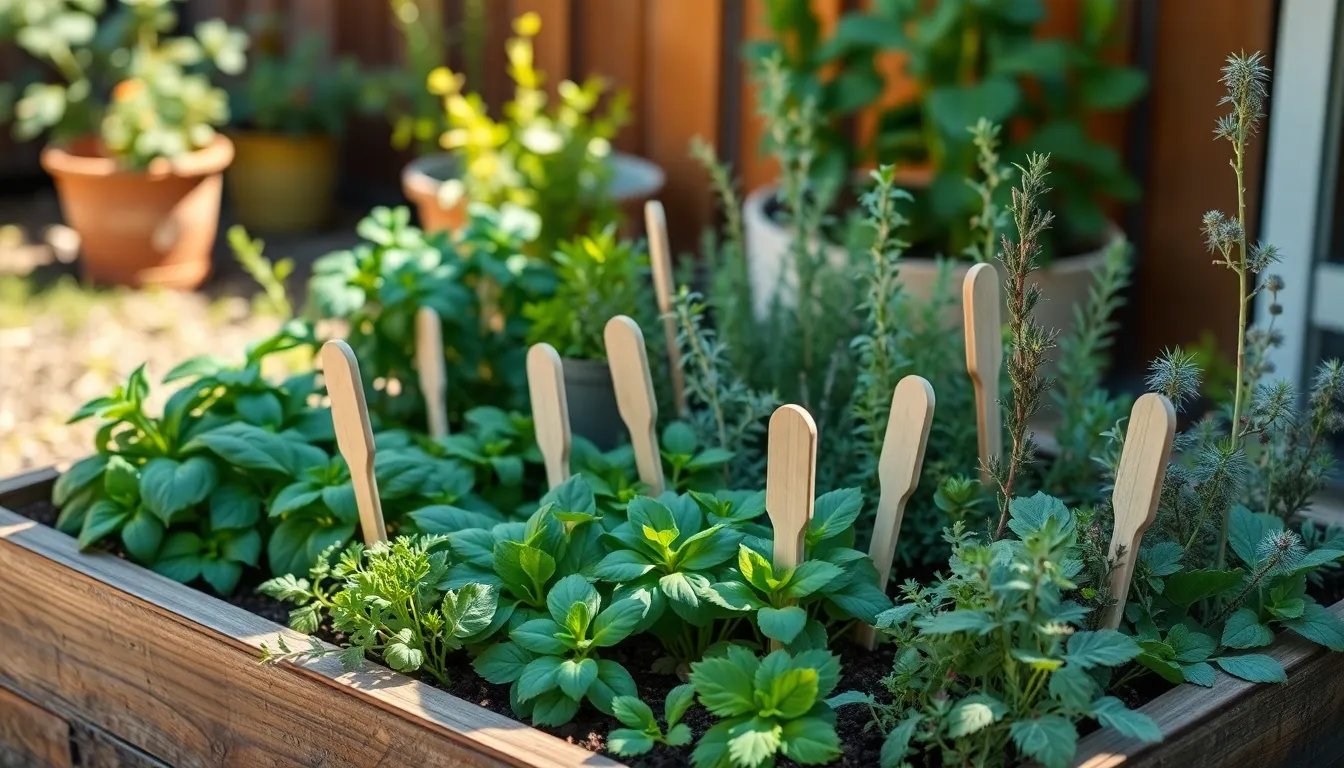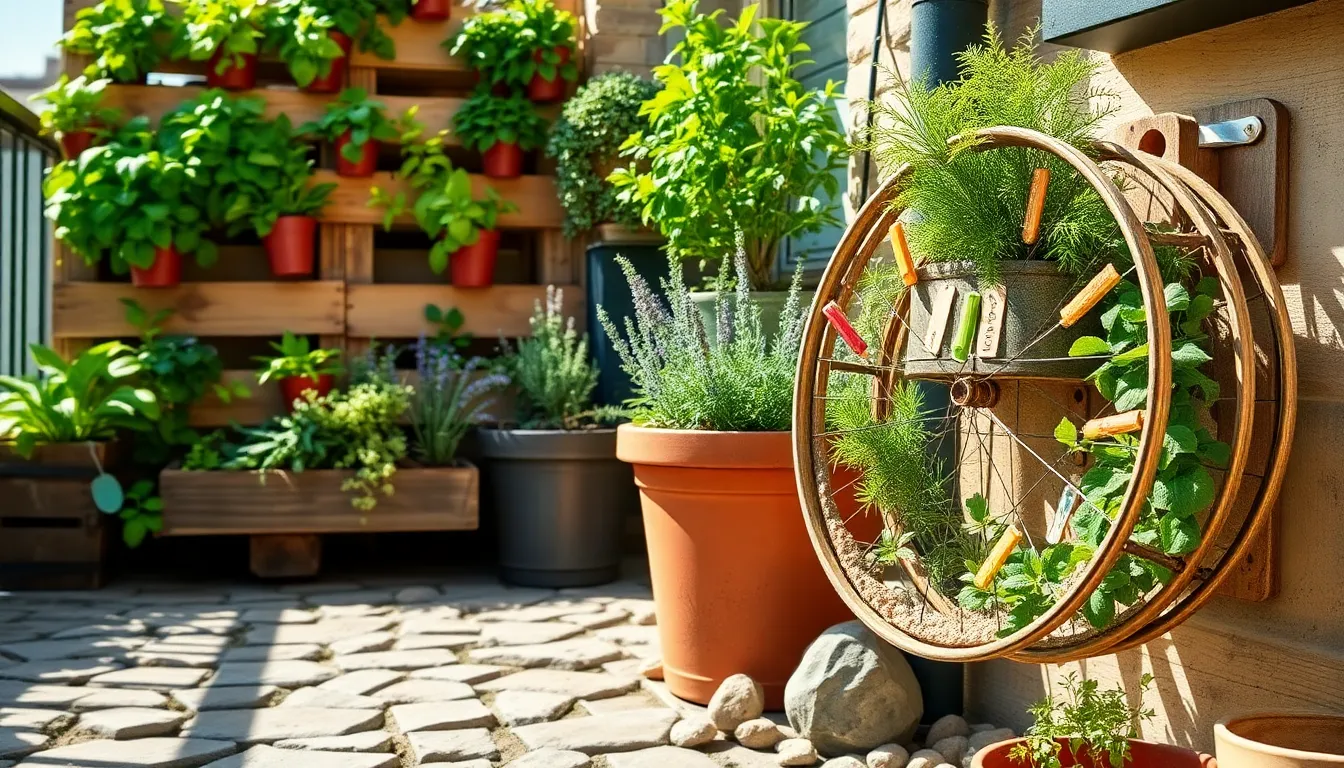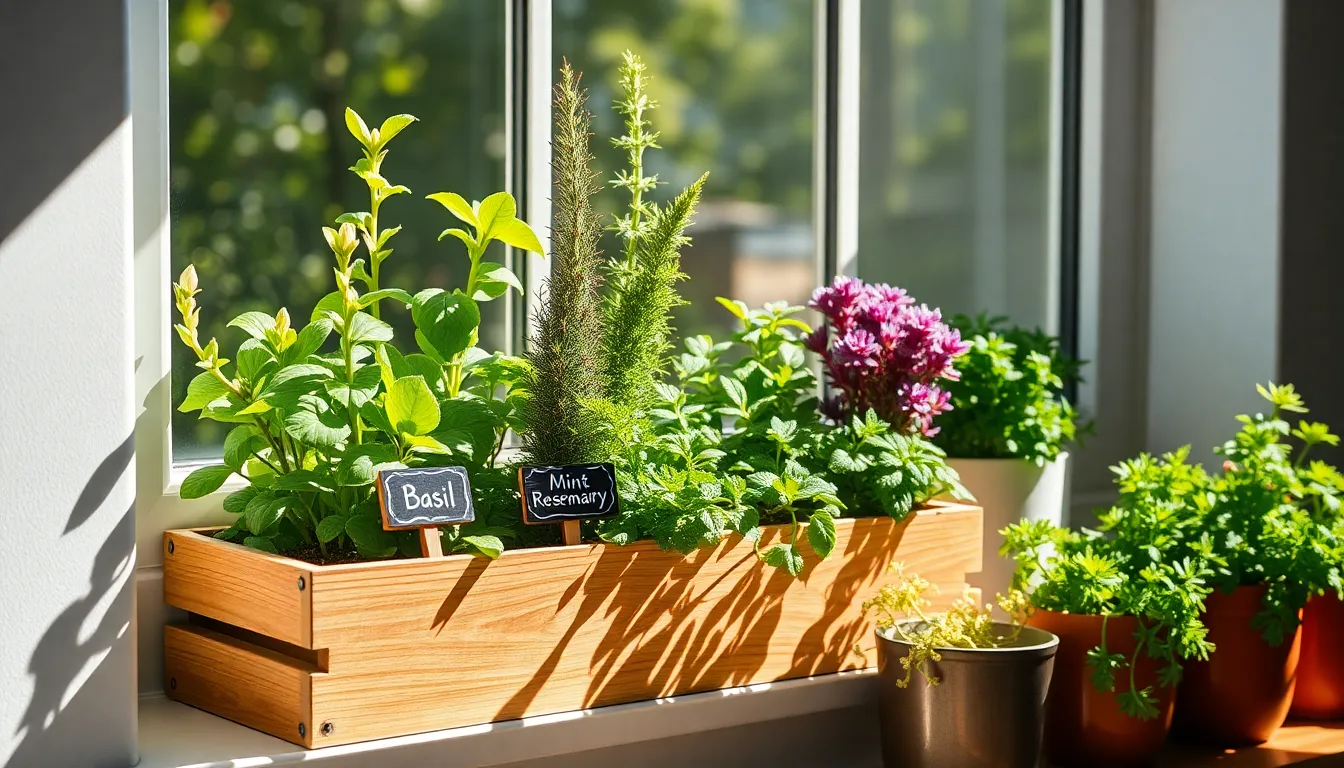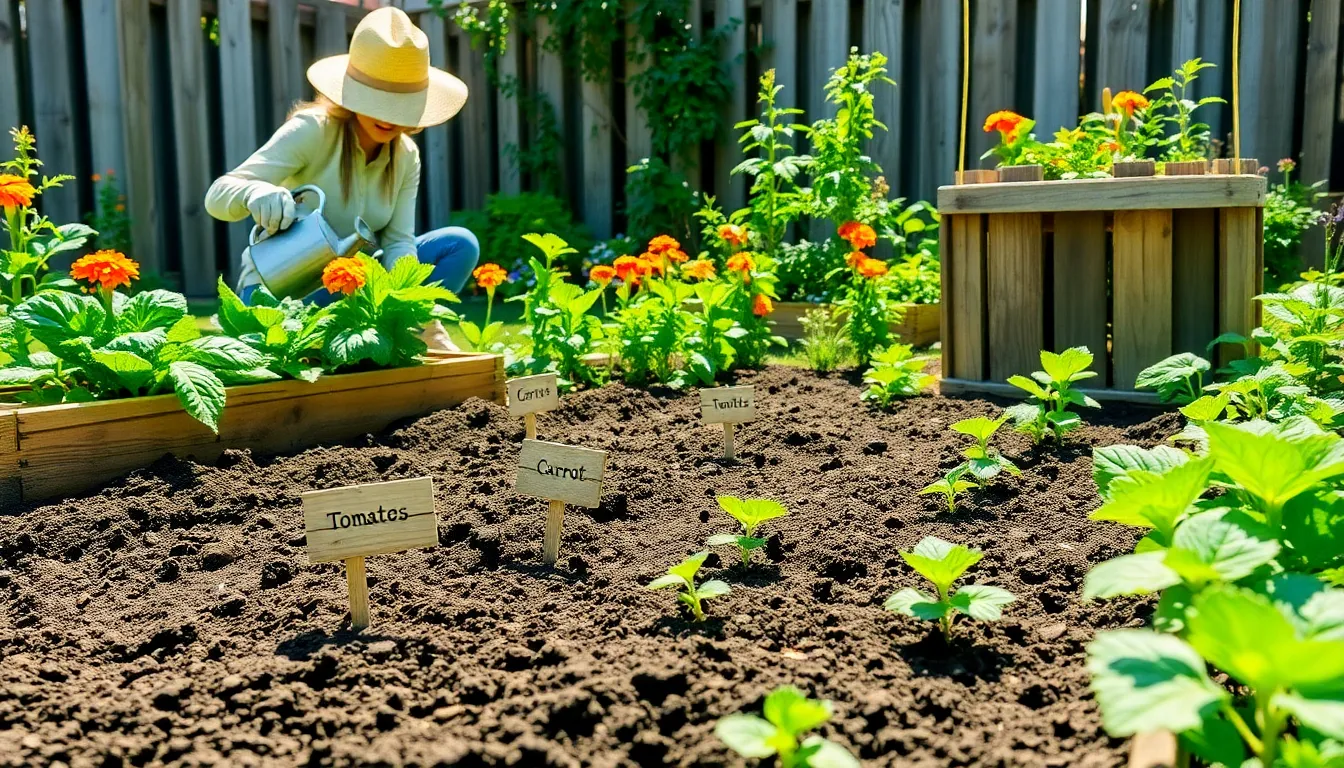Imagine stepping into your backyard or onto your balcony and being greeted by the aromatic embrace of basil, thyme, and rosemary. Creating your own herb garden is not only a delightful sensory experience but also an empowering step towards self-sufficiency and sustainability. Whether you’re a seasoned gardener or taking your first steps into the soil, building a simple herb garden is a rewarding endeavor, rich with flavor and fragrance.
For beginners, this guide will demystify the process of starting an herb garden, breaking it down into easy, manageable steps. Experienced gardeners will also find fresh insights and practical tips to enhance their existing practices and perhaps discover new herbs to cultivate. We’ll explore the essentials of selecting the right herbs, preparing your space, and ensuring your plants thrive, offering a bounty of fresh ingredients for your kitchen year-round.
What makes herb gardening so special is its accessibility—no sprawling garden plot is required. Whether you have a spacious yard or a sunny windowsill, creating a simple herb garden is within reach, and we’re here to walk you through it. By the end of this article, you’ll be ready to cultivate a garden that reflects your taste and suits your lifestyle, bringing a touch of nature’s bounty to your daily life.
Select a Suitable Location
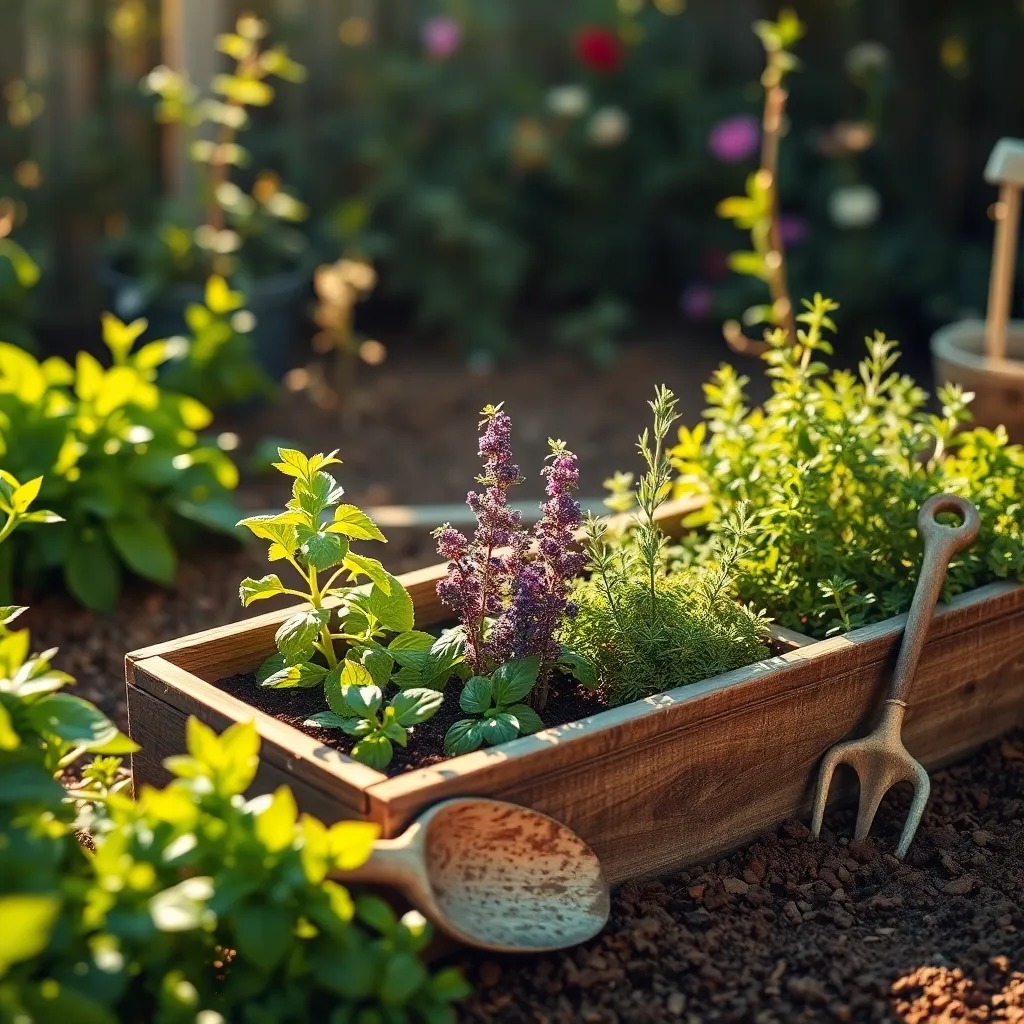
Choosing the right location is crucial for the success of your herb garden. Most herbs thrive in full sun, needing at least six to eight hours of direct sunlight each day.
Consider the soil quality in your chosen spot, as well. Herbs prefer well-drained soil that is rich in organic matter, so it may be necessary to amend the soil with compost.
Another aspect to consider is accessibility. Place your herb garden near your kitchen or a frequently used entrance to encourage regular use and maintenance.
For those with limited space, container gardening is a viable alternative. Use pots with adequate drainage holes and place them on patios or balconies where they can receive ample sunlight.
Gather Necessary Gardening Supplies
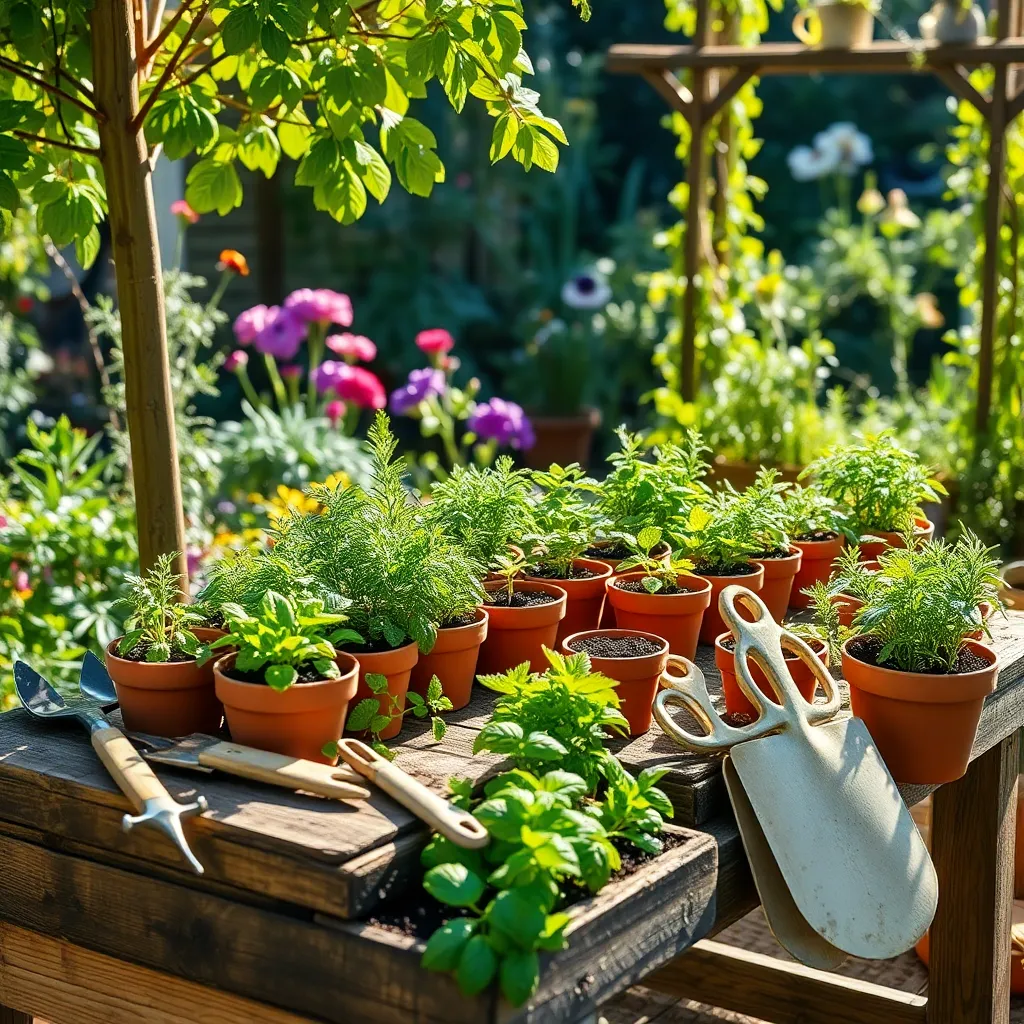
Before you start planting, it’s essential to gather the necessary gardening supplies. Having the right tools and materials on hand will ensure a smooth and enjoyable gardening experience.
Basic tools such as a trowel, pruners, and a watering can are indispensable for any herb garden. These tools help with planting, maintaining, and harvesting your herbs efficiently.
Consider investing in quality potting soil that provides good drainage and is rich in nutrients. A soil blend with a combination of peat moss, perlite, and compost works well for most herbs, providing them with the ideal growing conditions.
For those looking to go beyond the basics, a soil pH tester can be invaluable. Knowing your soil’s pH can help you make adjustments, ensuring optimal growth conditions for different herbs, as some prefer slightly acidic or neutral pH levels.
Don’t forget to have a supply of organic fertilizer on hand to boost plant health throughout the growing season. Applying a balanced, slow-release fertilizer every few weeks can lead to more robust and flavorful herbs.
Finally, gather some mulch to help retain moisture and suppress weeds around your herbs. Opt for organic mulches, like straw or shredded bark, which will break down over time and enrich the soil.
Prepare and Enrich the Soil
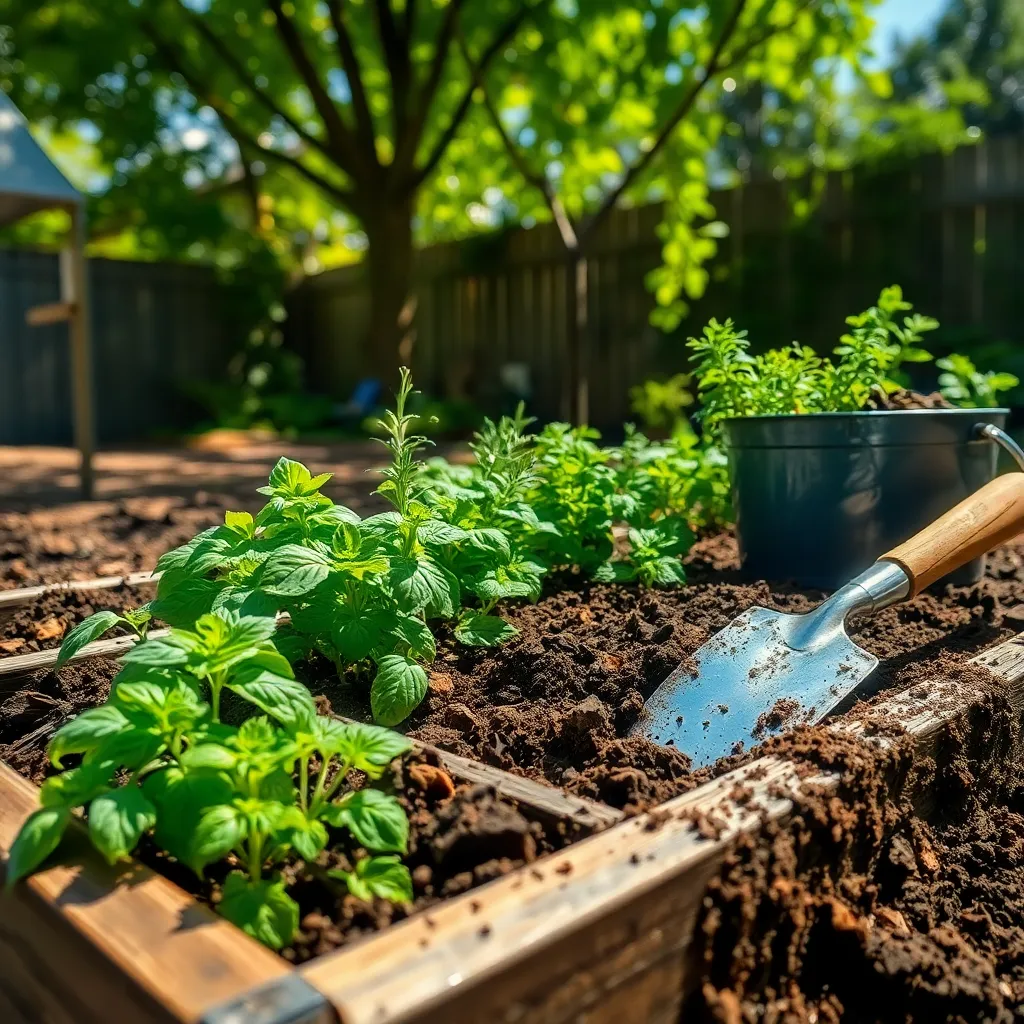
Preparing and enriching your soil is crucial for a thriving herb garden. Start by removing any weeds, rocks, and debris from your chosen garden area to ensure a clean slate.
Next, test the soil to understand its pH level and nutrient content, which will guide you in making amendments. Most herbs prefer a slightly acidic to neutral pH, so aim for a range between 6.0 and 7.0.
Incorporate organic matter like compost or well-rotted manure to improve soil structure and fertility. This not only enhances water retention but also supplies essential nutrients needed for herbs to flourish.
For those looking to take an extra step, consider adding a balanced organic fertilizer specifically designed for herbs. This can further boost growth and ensure that your plants receive a full spectrum of nutrients.
Plant Herb Seeds or Seedlings
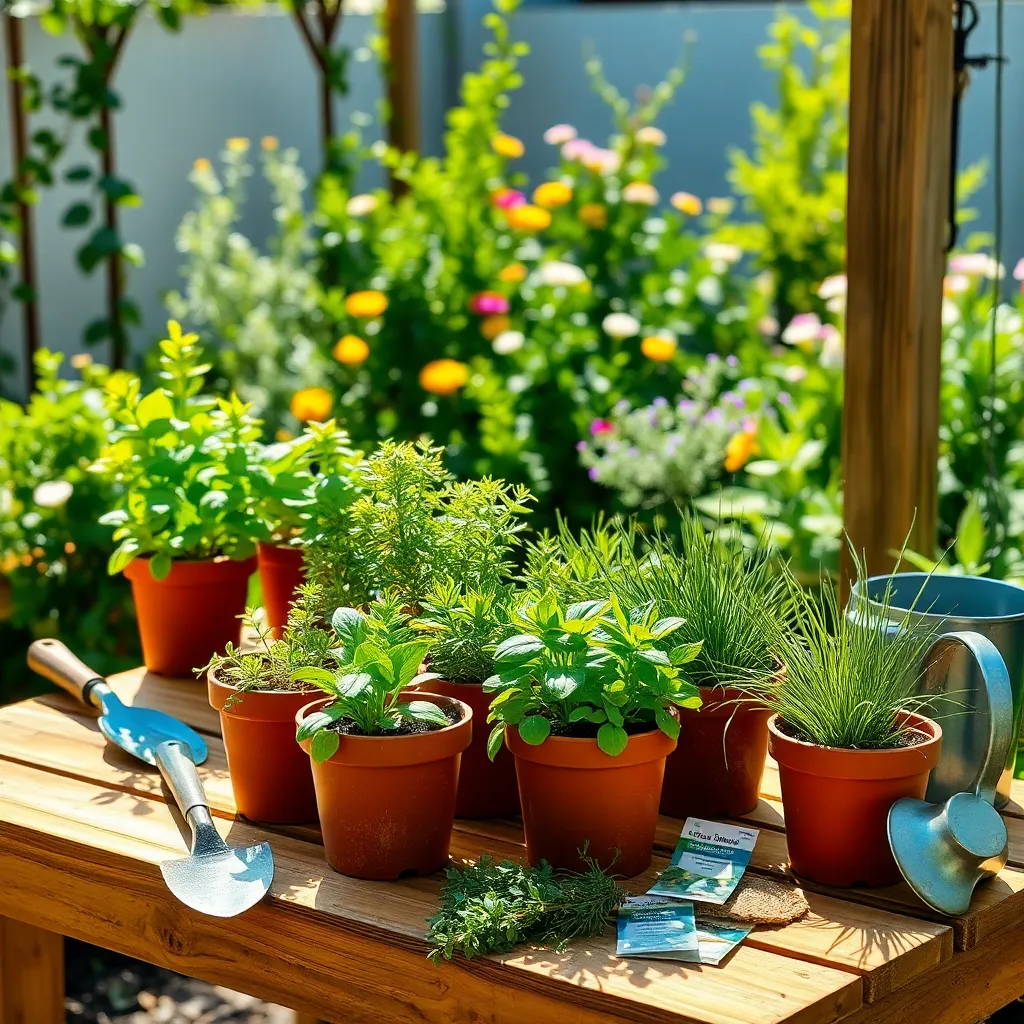
Once your soil is ready, it’s time to choose between starting with seeds or seedlings. Seeds offer a broader variety and a sense of accomplishment, while seedlings provide a head start with established plants.
If you decide to plant seeds, make sure the soil is consistently moist but not waterlogged. This is crucial, as herb seeds are often delicate and require gentle care to germinate successfully.
For those opting to plant seedlings, handle them carefully to avoid damaging the roots. Plant them at the same depth they were growing in their pots, ensuring that they are well-supported by the enriched soil.
Herbs generally prefer well-draining soil, so consider adding sand or perlite if your soil is too dense. Avoid overwatering, as herbs are prone to root rot in soggy conditions, particularly those like rosemary and thyme.
Whether using seeds or seedlings, ensure your herbs receive at least six hours of sunlight daily. If growing indoors, place them near a south-facing window or use a grow light to supplement natural light.
Advanced gardeners might experiment with starting seeds indoors under controlled conditions. This allows for a longer growing season and can lead to stronger, more resilient plants when transplanted outdoors.
Water and Maintain Regularly
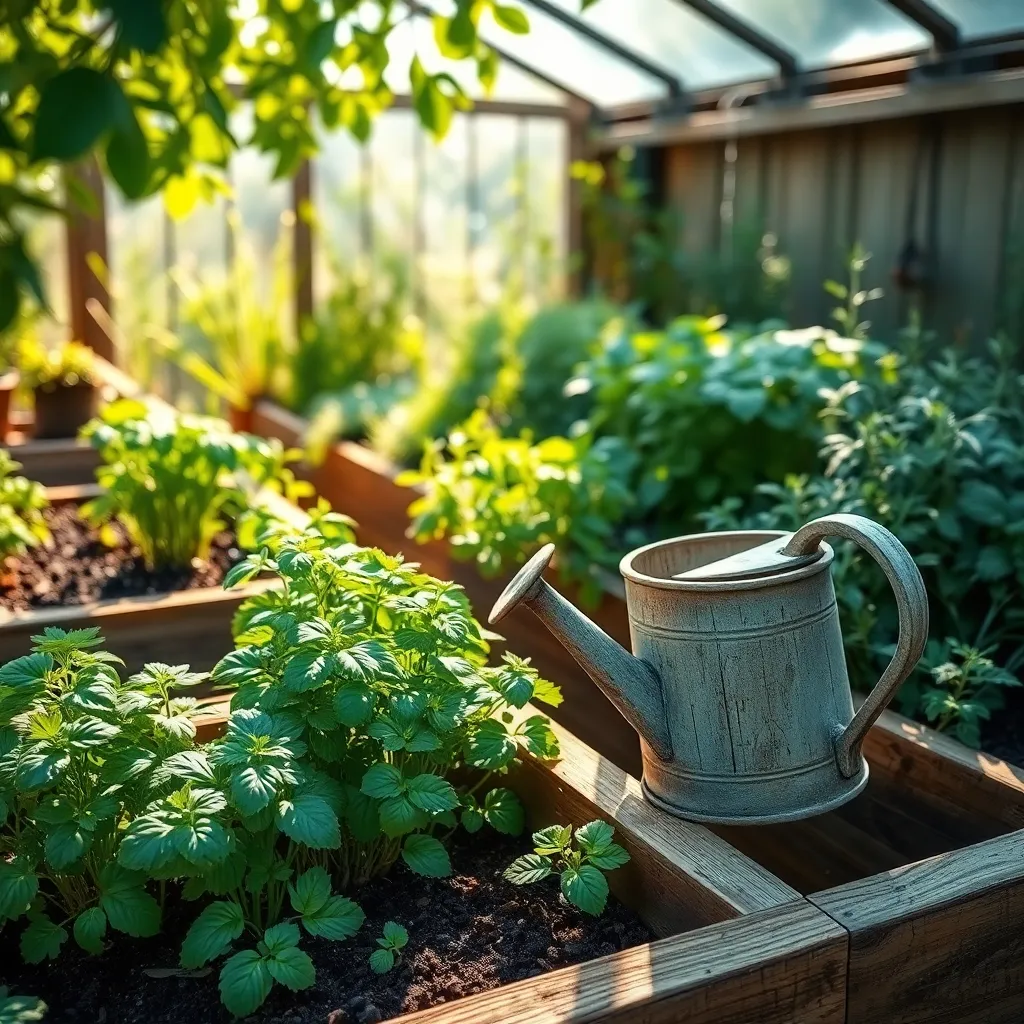
Proper watering is crucial to the success of your herb garden, as both overwatering and underwatering can harm your plants. A general rule of thumb is to check the soil moisture; when the top inch feels dry, it’s time to water your herbs.
Use a watering can with a narrow spout for more control, ensuring that water reaches the plant’s roots without overly soaking the leaves. Avoid watering in the heat of the day as this can lead to rapid evaporation and potential leaf scorch; early morning or late afternoon is ideal.
Diversify your approach based on the herb varieties you are growing, as some herbs like rosemary and thyme prefer drier soil, while basil and mint thrive in more moisture. Consider investing in a moisture meter for more precise monitoring if you’re tending to a more extensive herb collection.
Beyond watering, it’s essential to regularly maintain your herb garden to ensure vigorous growth and productivity. Prune herbs frequently to encourage bushier plants and prevent them from becoming leggy; this also helps keep the garden tidy.
Inspect your herbs regularly for signs of pests or disease, such as discoloration or wilting leaves, and address these issues promptly. Incorporate a gentle organic fertilizer into your routine every 4-6 weeks to provide essential nutrients, especially if you’re growing herbs in containers with limited soil resources.
Mulching can help retain soil moisture and suppress weeds, which is particularly useful in outdoor herb gardens. Use organic mulch like straw or shredded leaves, ensuring it doesn’t touch the base of the plants to avoid rot.
Conclusion: Growing Success with These Plants
In nurturing both an herb garden and a relationship, the principles of tending, patience, and growth are strikingly similar. Throughout this article, we’ve explored the importance of consistent communication, the necessity of mutual support, the value of shared goals, the power of forgiveness, and the joy of celebrating small victories. These five relationship concepts, much like the herbs in your garden, require regular care and attention to truly flourish.
As your immediate next step, consider dedicating a few minutes today to have an open conversation with your partner about a shared interest or goal, or even plant a small herb together. This simple act can be a meaningful start to deepening your connection.
Remember, nurturing your relationship is an ongoing journey. Bookmark this article now, so you have these valuable insights at your fingertips whenever you need a gentle reminder. By committing to these principles, you are sowing the seeds for a relationship that thrives and grows stronger with time. Embrace this opportunity to cultivate a vibrant partnership, knowing that each small effort contributes to a flourishing future together.

